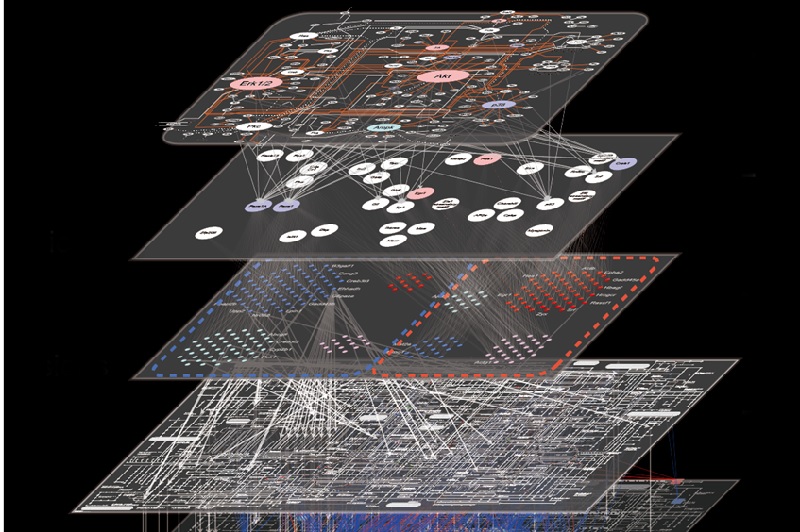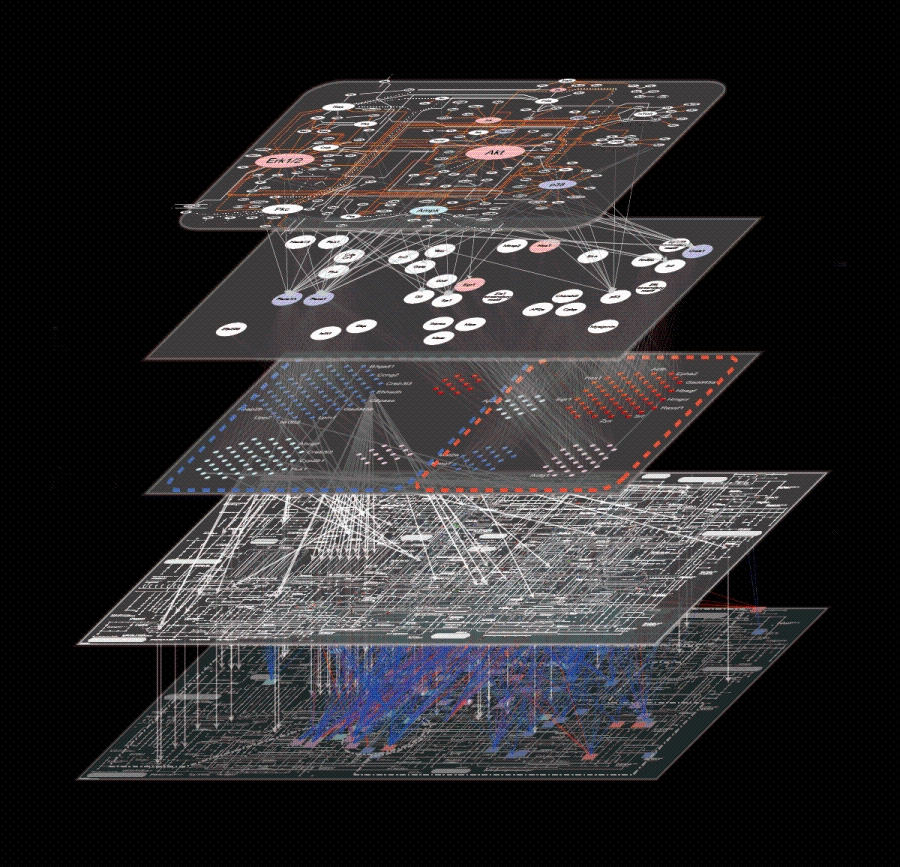A subway map for diabetes Insulin tracked through cell using new method combining database, experimental results Research news


Research diagram of the insulin cell-signaling pathway in mice. Researchers have combined data from multiple databases and original, large-scale lab experiments to track the effects of insulin on other molecules within mouse cells. Cells respond differently to high and low concentrations of insulin. Researchers hope their trans-omic technique will be useful in identifying new methods to control insulin levels in type 2 diabetes and will be applied to understanding other complicated signaling pathways within cells. Image by Shinya Kuroda CC-BY-ND.
High or low concentrations of insulin activate different cell signaling pathways, according to a new scientific method that combines data from multiple databases and large-scale lab experiments. This ongoing research project may help unveil better approaches to understand the causes of and potential therapies for type 2 diabetes.
Scientists already have methods to understand all the genes (genomics), proteins (proteomics), or metabolites (metabolomics) within a cell, but not all of these different types of molecules at the same time. University of Tokyo researchers are pioneering the new trans-omics approach that combines all of these previously individual fields – the different "omics" – to understand the interactions between molecules inside cells in a comprehensive, highly detailed way.
"Our results look almost like a subway map. Each molecule that insulin influences, directly or indirectly, is like a station. But a map is not very useful if you do not know the route. Our method combines database information with new experimental data to show how the different stations, or molecules, connect after receiving the insulin signal," said Professor Shinya Kuroda.
Professor Shinya Kuroda has been pioneering trans-omics approaches since the field started to emerge around 2013. Project Researcher Kentaro Kawata is the first author of the recent paper and completed the research as part of his doctoral studies.
Kuroda and his team are interested in how cells send signals to control their internal processes, especially how those signals change throughout the day. Insulin is a highly dynamic molecule and the hormone that helps control how the body turns sugar from food into energy. Improper regulation of insulin leads to diabetes.
"Type 2 diabetes is a complex disease, but it can be simply understood as an impairment of the temporal pattern of the body’s response to insulin," said Kawata.
The research team uncovered that high and low concentrations of insulin activate different genes and metabolic processes. Cells respond not just to the presence or absence of insulin, but can interpret and respond differently to varying concentrations of insulin to control distinct biological processes.
The research team is currently conducting experiments to verify the results they find from their trans-omic data analysis are confirmed by studies with live mice. Detailed understanding of the dynamics of how and when insulin activates so many other molecules within cells may make it possible to design more effective insulin regimens for people with diabetes.
"Once we have mapped the large-scale network, we can identify potential drug targets," said Kuroda.
Background Information
Insulin hormone is released by the pancreas and acts as a master switch to control many other processes within muscle, fat, and liver cells. In a healthy body, insulin levels are dynamic, present in high or low concentrations at different times as the body requires, usually in response to eating or fasting. To respond properly to these changing levels of insulin, cells must detect and interpret a regular, low level of insulin and situation-specific increases in the hormone.
Type 1 diabetes is caused by the dysfunction of cells that produce insulin in the pancreas. Type 2 diabetes is caused by the body losing its sensitivity to the insulin that is naturally produced.
About the Research
The study was completed with collaborators in Japan at RIKEN Center for Integrative Medical Science, Keio University, Kyushu University and the Japan Science and Technology Agency.
The research paper is a peer-reviewed experimental study using mice published in iScience, a Cell Press journal.
Papers
Kawata K, Hatano A,i Yugi K, Kubota H, Sano T, Fujii M, Tomizawa Y, Kokaji T, Tanaka KY, Uda S, Suzuki Y, Matsumoto M, Nakayama KI, Kaori Saitoh K, Kato K, Ueno A, Ohishi M, Hirayama A, Soga T, and Kuroda S, "Trans-omic analysis reveals selective responses to induced and basal insulin across signaling, transcriptional, and metabolic networks," iScience: September 11, 2018, doi:10.1016/j.isci.2018.07.022.






